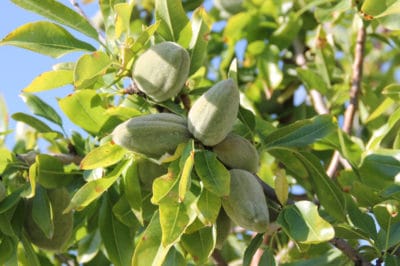The Hardiness Zone Map
The USDA hardiness zone map indicates how well a specific plant will tolerate winter cold in your area. The 2012 version of the Hardiness Zone map has 13 zones, each divided into two sub-zones labeled “a” and “b”. The coldest winters occur in zone 1 (parts of Alaska) and the warmest in zone 13 (parts of Hawaii).
Hardiness Zone Numbering
As you move from zone 1 up the scale, the average minimum winter temperature for each zone increases 10°F (5.6°C). A 5°F (2.8°C) difference separates winter lows between sub-zones. As an example, average winter lows in zone 7a are 30°F (16.8°C) higher than those in zone 4a, and 25° (14°C) higher than those in zone 4b.
Climate Effects on Almond Growth
Almonds thrive in climates accommodating their unique growth process. They need a January-February warm-up following a cold November and December. The warm-up awakens dormant buds; by February, the flowers are ready for pollination. In zones 6 and lower, late spring frosts may damage or kill buds and blooms. The trees survive, but their production often suffers.
The Ideal Almond-Growing Zone
If an almond-growing Paradise exists, it’s California’s Central Valley and USDA zones 9 and 10. Summers are hot and sunny and winters get cold enough to meet most chilling requirements. By February, frost leaves and temps settle between 55° to 60°F (12.7° to 15.5°C). Winter rains taper off so bees pollinate undisturbed.
Growing Almonds in Other Zones
Can’t match the Central Valley’s climate? Not to worry – many almond cultivars also perform acceptably in USDA zones 7 or 8. They include:
- ‘All-in-One,’ (zones 8-9; 400 chilling hours) is a semi-dwarf, self-pollinating tree that wants lots of summer heat. As a bonus, it cross-pollinates with all other cultivars.
- ‘Garden Prince,’ (zones 7-9; 250 chilling hours), another self-pollinating semi-dwarf, stands 10 to 12 feet tall. Regular summer pruning maintains it at 8 feet.
- ‘Nonpareil,’(Zones 7 through 9; 400 chilling hours)adapts well to different growing conditions. Grow it with a cross-pollinator, such as ‘All-in-One.’
Expert gardener’s tip: To guarantee the almond trees you plant suit your hardiness zone, get ones started at a local nursery.
